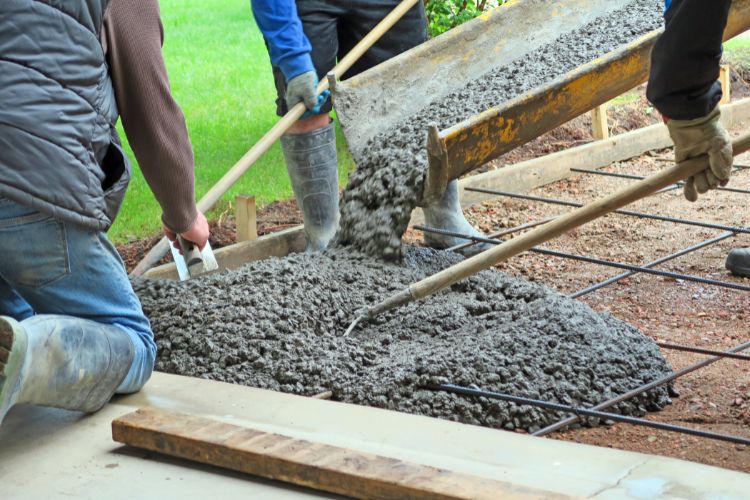In drought conditions, as they are experiencing in the U.S. Southwest, water tables drop, lakes and reservoirs dry up, and industry and people suffer. Water is both the most valuable and least appreciated raw material in the world. Until it isn’t available.
Water is necessary for all life forms on earth. It is also a necessity for almost all construction and industrial activities, both for use as a raw material and for cooling and hydrating the workers and equipment involved. Second to water in importance, the number two material in quantity used, is sand. Obviously, sand and water go together in nature in the form of beaches, but they also go together in industry in the form of concrete.
Unfortunately, concrete, its ingredients and manufacture, have a high carbon footprint, generating about 8% of the world’s CO2. Because of its functional performance characteristics and the widespread availability of limestone, cement is likely to remain the construction material of choice globally. However, as most cement producers address the challenges of uncertain demand and distribution, they are also presented with an opportunity to rethink strategies—such as selecting the best path for decarbonization by investing in digital and technological growth opportunities to create sustainable construction methods and solutions.
ThroughPut, a company focused on applying AI (artificial intelligence) to supply-chain problems, is partnering with leading cement and building materials innovators to reduce the global cement supply chain waste. It recently issued strategic platform updates to its Demand planning and distribution software modules to help cement manufacturers achieve sustainable competitive product optimization with streamlined demand planning and logistics efforts.
Most recently, ThroughPut has been working with Holcim and its partners, as part of the Holcim innovation accelerator to optimize costs, reduce CO2 emissions and grow efficiencies across cement and building materials end-to-end value chains. ThroughPut has also worked with the Latin America innovator, Progreso through their Progreso-X innovation arm to utilize data and AI-driven supply-chain software suite to help identify supply-chain efficiency opportunities and working capital improvements.
The applications from ThroughPut can benefit the cement and concrete industries in a variety of ways:
- Enhanced Product Mix and Segmentation – Helps cement supply chain managers identify the right demand segmentations for various products to unlock better sales and margin. This facilitates easy drill down from aggregate opportunities into tactical recommendations on optimal stock levels per SKU to be maintained for each location to identify specific inventory build-ups between maintenance periods.
- Elimination of Excess Inventory – Enables CSCOs (chief supply chain officers) easily eliminate over hundreds of tons of excess inventory every year. ThroughPut’s AI-driven demand planning & allocation results in improving flows while maintaining the same load on logistics along with more fully loaded trucks for fewer runs.
- Improved Customer Service – Provides supply chain planners with improved customer service levels and overall logistics spend can be enhanced by using better allocations by SKU.
- Growth with Sustainability – Boosts sustainability efforts and reduces the biggest contributors of supply-chain waste while gaining end-to-end material flow visibility, optimizing product-mix for higher savings and production efficiency, to streamline truck routing and logistics operations.
The post-COVID-19 pandemic world has revealed the fragility of global value chains, highlighting the unpredictable complexity of high customer demand and low supply cycles, resulting in stretched delays. ThroughPut’s AI solution successfully delivers sustainable and efficient cement supply chain operations to overcome the industry’s erratic market uncertainties, while providing clear bottom line benefits.
Want to tweet about this article? Use hashtags #construction #sustainability #infrastructure #AI #5G


